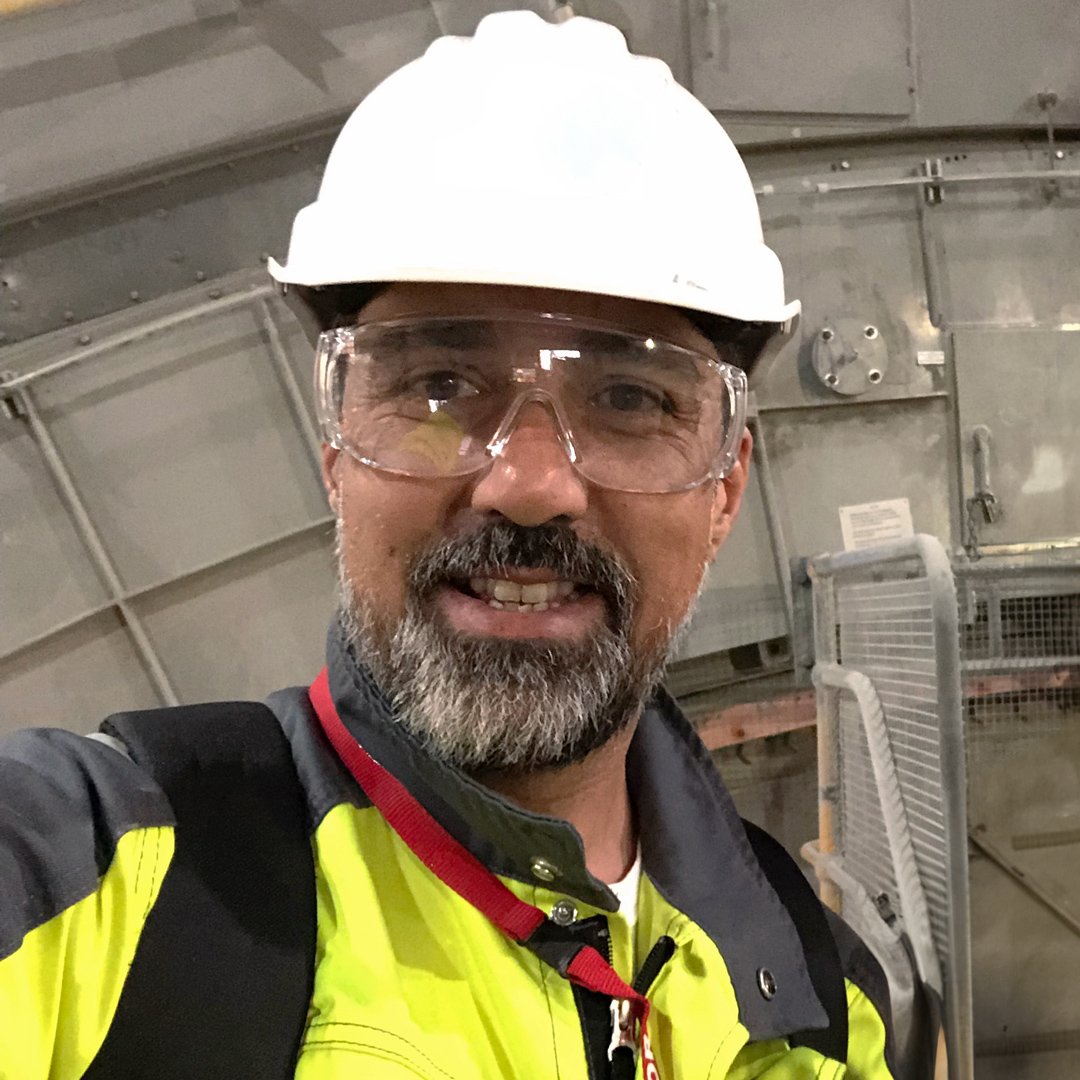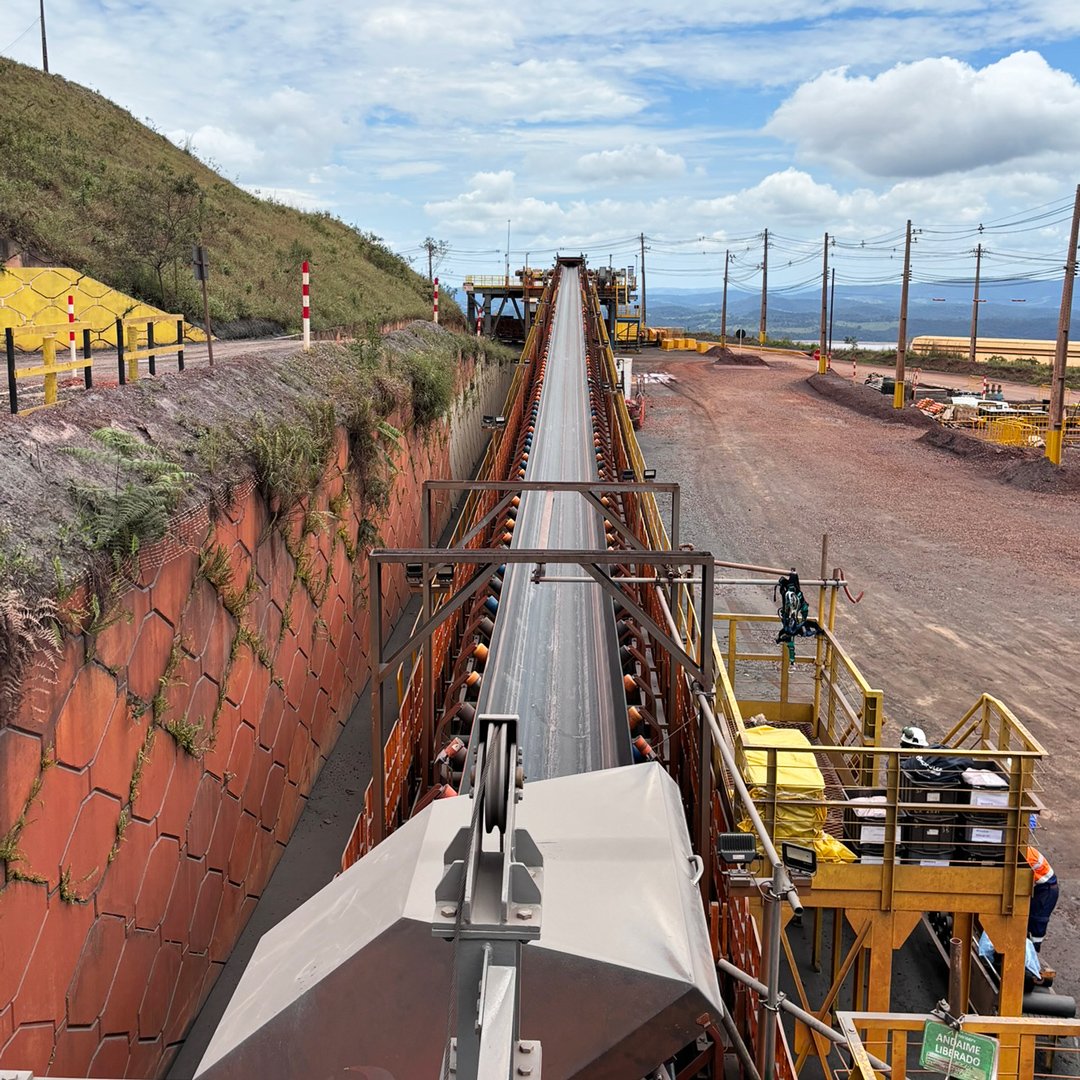HX900: Wear protection engineered to last

In mineral processing, wear is more than a maintenance issue. It means costly downtime, safety risks from frequent interventions, and the environmental impact of producing, transporting, and scrapping tonnes of replacement steel every year. Extending wear life is therefore not only about productivity, but a critical lever for sustainability.
Unlike a carbide overlay or surface treatment, Sandvik HX900 is a cast-in-carbide composite that metallurgically bonds extremely hard cemented carbides, with durable nodular cast iron. This unique combination provides the hardness needed for abrasion resistance and the toughness to withstand heavy impacts in demanding material handling systems.
 The circular production process makes HX900 stand out even further. Through Sandvik’s global carbide recycling program , worn-out tools and components are collected and refined into high-quality powders. From these, cemented carbide particles are collected and cast into HX900 at our foundries. The result is a material made from 99% recycled nodular iron and 100% recycled cemented carbides – reducing energy use by around 70% and CO₂ emissions by approx. 40% compared to conventional carbide production.
The circular production process makes HX900 stand out even further. Through Sandvik’s global carbide recycling program , worn-out tools and components are collected and refined into high-quality powders. From these, cemented carbide particles are collected and cast into HX900 at our foundries. The result is a material made from 99% recycled nodular iron and 100% recycled cemented carbides – reducing energy use by around 70% and CO₂ emissions by approx. 40% compared to conventional carbide production.
Performance that speaks for itself
In operation, HX900 delivers wear life that far exceeds conventional alternatives – lasting up to five times longer than white iron and carbide overlay plates, and 10-20 times longer than quenched steels. For operators, this translates into fewer shutdowns, safer working conditions, and significantly lower total cost of ownership.
 “Wear protection may not crush the rock, but it protects the process, enabling every operation to deliver more value” says Andre Gabriel, Product Line Manager business area Rock Processing at Sandvik. “Every plate we keep in service longer means fewer tonnes of steel produced, shipped, and scrapped – and keeps the customer’s process running without disruption.”
“Wear protection may not crush the rock, but it protects the process, enabling every operation to deliver more value” says Andre Gabriel, Product Line Manager business area Rock Processing at Sandvik. “Every plate we keep in service longer means fewer tonnes of steel produced, shipped, and scrapped – and keeps the customer’s process running without disruption.”
The real-world results to back up the claims are compelling. At a major iron ore site in South America, conventional plates in a transfer chute lasted only a few weeks before failing. With HX900, the same chute remained in service for more than a year – over six times longer than the previous solution. In Brazil, the maintenance manager at a large iron ore plant said “the biggest achievement was eliminating the risks linked to frequent changes at height. With HX900, what once required replacement every 45 days now lasts 10 months, which makes a big difference in safety and reliability”. Additionally, in Australia, a maintenance superintendent in mining reported that HX900 increased wear life from just one year to three or four – delivering annual savings of well over $200 000.
Each case demonstrates the same pattern: extending wear life not only saves parts, but saves energy, reduces waste, and boosts eco-efficient performance in measurable ways.
Eco-efficiency built in
 The sustainability benefits of HX900 go well beyond recycled inputs. Longer service life means fewer parts produced and transported, fewer shutdowns and maintenance interventions, and lower CO₂ emissions tied to material use and energy consumption. Even at the production stage, HX900 has an exceptionally low footprint: verified data from Sandvik’s foundry in Sweden shows that producing these parts results in approx. 2 g of CO₂ per kilogram of material – negligible compared to the ~2 kg emitted in typical quenched- and tempered 450 hardness steel wear plates. Combined with extended wear life, the overall environmental impact is huge.
The sustainability benefits of HX900 go well beyond recycled inputs. Longer service life means fewer parts produced and transported, fewer shutdowns and maintenance interventions, and lower CO₂ emissions tied to material use and energy consumption. Even at the production stage, HX900 has an exceptionally low footprint: verified data from Sandvik’s foundry in Sweden shows that producing these parts results in approx. 2 g of CO₂ per kilogram of material – negligible compared to the ~2 kg emitted in typical quenched- and tempered 450 hardness steel wear plates. Combined with extended wear life, the overall environmental impact is huge.
“HX900 was designed to last, but lasting alone is not enough today. It also needs to fit into a circular way of thinking, and that is exactly what it does”, notes Andre Gabriel. “Extending wear life is not just good for business – it helps drive mining toward an eco-efficient future.”
Protecting every process
From transfer chutes and hoppers to conveyors and silos, HX900 plays a crucial role in protecting the structures that keep material moving. While not crushing rock, it ensures the process around it keeps running reliably. By combining performance, safety, and circularity, HX900 helps operators achieve more uptime, lower costs, and a reduced carbon footprint. It’s wear protection engineered to last – and made for eco-efficient rock processing.
